Fiddle leaf fig pruning – expert tips for a bigger, bushier plant
We all love huge and glossy fiddle leaf fig leaves, but sometimes you need to prune them for the good of your plant

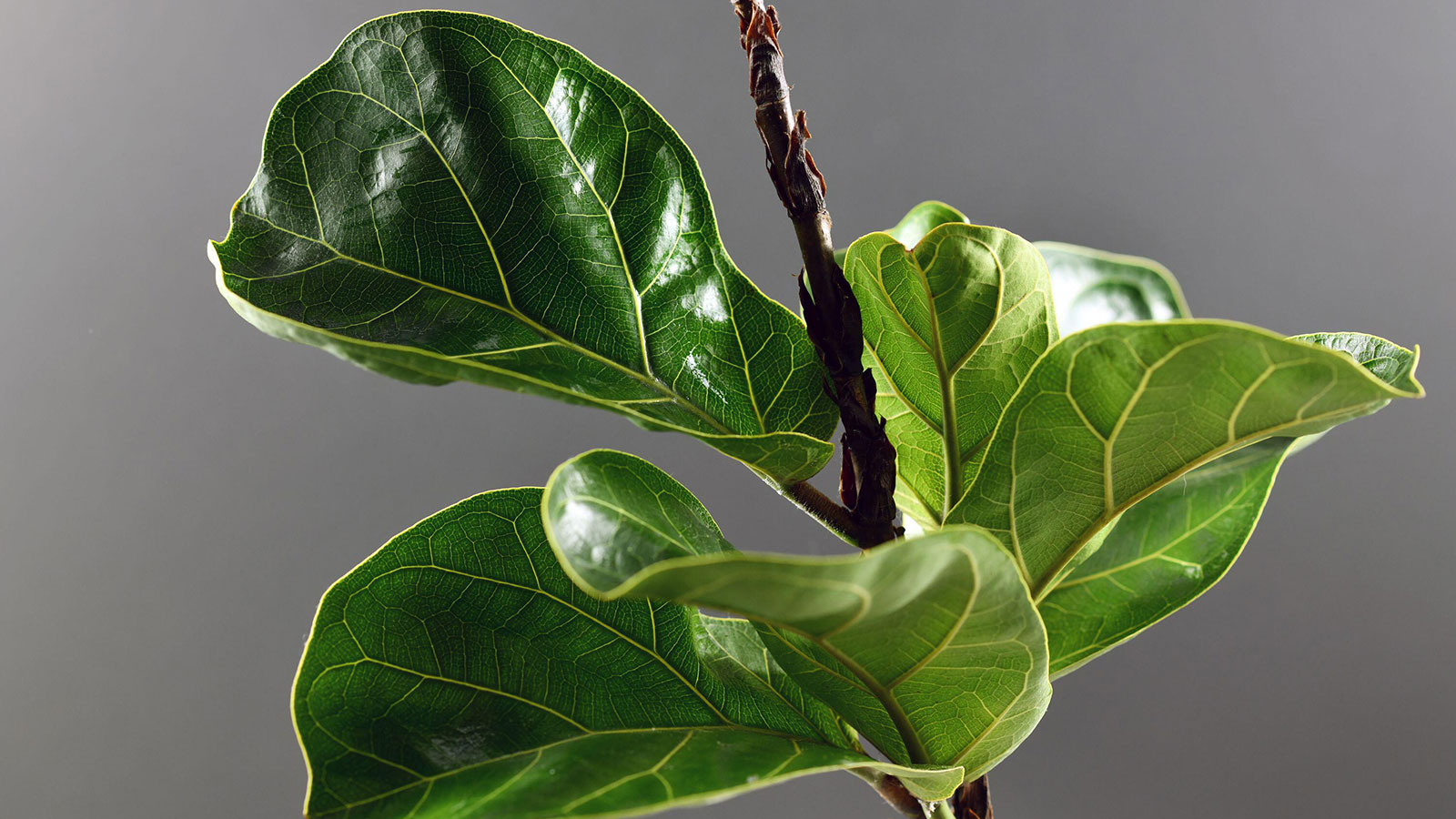
Fiddle leaf fig pruning is a must if you want to create a more attractive shape, your plant looks out of balance or if the leaves are damaged. If your plant is one of the bigger varieties that are like mini trees and looks like it's getting ready to tip over it also means it's time to get the pruning shears out.
Although you might be nervous about trimming those lush leaves remember that pruning is a key part of how to grow and care for fiddle leaf fig plants. It's good for your plant to be pruned around once a year so it can regenerate and put on some new growth.
The good news is that if you prune a healthy plant it will divide its branch where it has been pruned, resulting in two branches where one used to be. This means you will end up with a much fuller and more shapely plant.
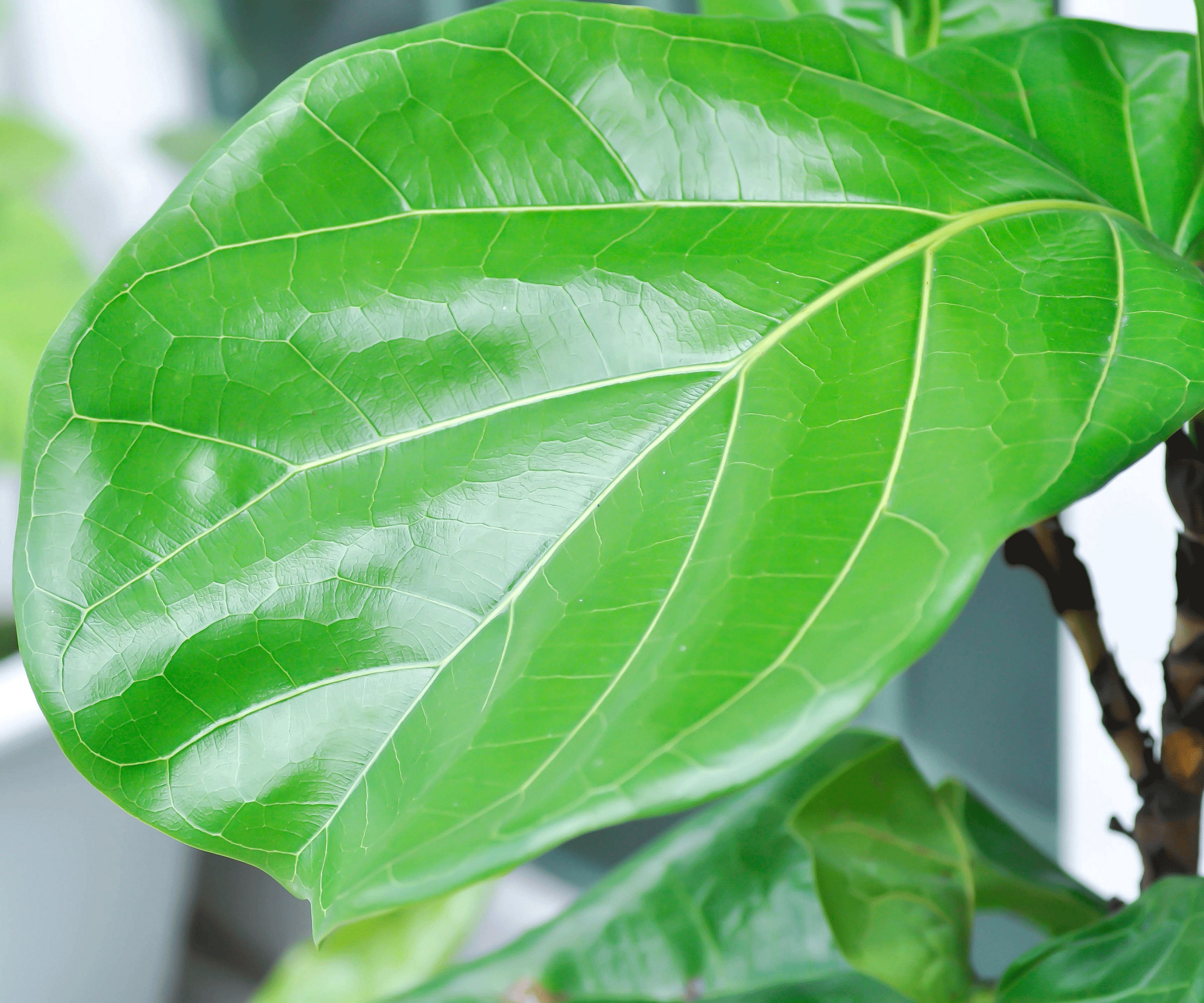
Prune your fiddle leaf fig correctly and you'll be rewarded with lots of lush new leaves

Sarah Wilson has been writing about gardens since 2015, covering everything from garden design to houseplant care. She has studied introductory garden and landscape design as well as floristry. A proud houseplant parent, she enjoys tending to her collection of more than 50 indoor plants. Even though she is never entirely happy to remove healthy leaves from her fiddle leaf fig plants, she knows it's for their own good!
5 reasons for pruning your fiddle leaf fig
Fiddle leaf figs are such easy indoor plants that it means they can generally be left alone. But there are several reasons why you could be thinking about fiddle leaf fig pruning. These are generally triggered by concern for the look or health of your plant. Here's our round-up of the most common reasons you could find yourself reaching for the pruning shears.
1. Your plant is too tall
Fiddle leaf fig plants can grow as high as the ceiling, which means there's every chance they will eventually get too tall for their present location. Fiddle plants look best when their top leaves are at least 10 inches below ceiling level, so you will want to keep in check any growth beyond that.
The taller the plant grows the more top heavy it can become and may even start leaning over at an angle. By pruning your fiddle to keep it from getting too tall, you’ll create a stronger and more compact plant.
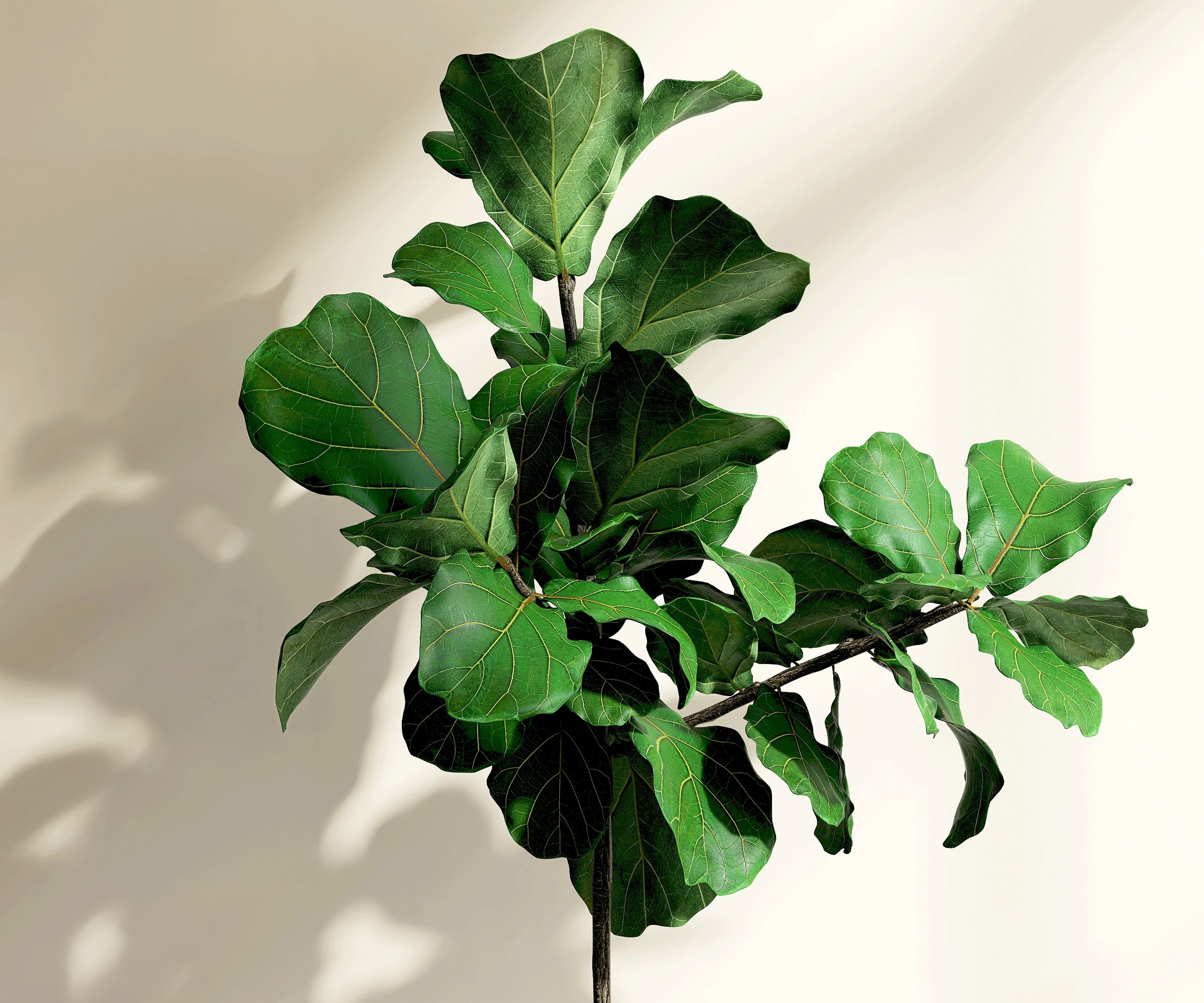
This leggy specimen is moving in on the ceiling
2. Your plant isn't a pleasing shape
If your plant doesn't have balanced growth it could be because of its position and light exposure. Perhaps it's side-on to a window, for example, which can lead to lopsided growth. If this is the case and you don't want to move your plant just remember to turn it round regularly and that way it should eventually become more balanced. Symmetrical is always a good look with a fiddle.
Design expertise in your inbox – from inspiring decorating ideas and beautiful celebrity homes to practical gardening advice and shopping round-ups.
Meanwhile it never hurts to tidy up the shape of a lopsided fiddle leaf fig with the shears to help balance things up. Something like these pruning scissors from Amazon would be ideal.
'You can also use a wooden stake to help guide the stems into the shape you’d like,' suggests Lina Cowley of trimmedroots.com. 'Simply tie the stems to the stake with a plant tie or zip tie and give them some time to grow into the desired shape.'
If you're looking to grow a tree-shaped fiddle leaf fig, try removing the bottom leaves and branches to encourage a long stemmed look.
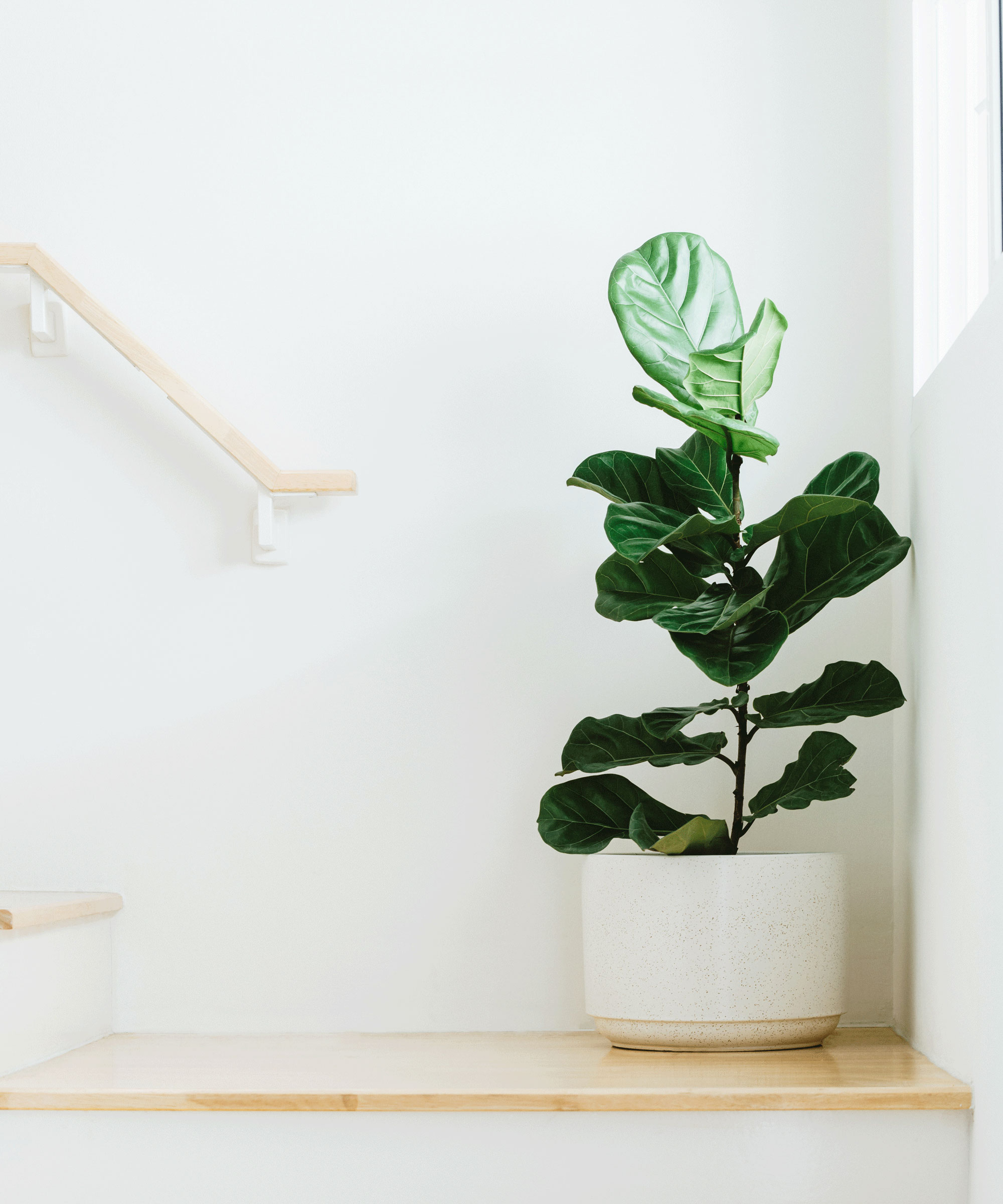
Ideally that gap between the bushy top growth and the sparse leaves at the bottom of the stem needs closing up
3. You want a bushier plant
You can shape your fiddle leaf fig by cutting off the top of the main stem to encourage branching. This will create a fuller, bushier plant. You can also cut back any branches that are growing too long.
If you desire a bushier plant, monitor new growth. 'Pinching back new growth is a great way to encourage a bushier fiddle leaf fig,' says horticulturalist and CEO of Nccuttingtools Joseph Clement. 'When you pinch back new growth, it encourages the plant to branch out and produce new leaves from the sides. This will redirect the plant's energy and promote new growth from the sides.'
As well as pruning and pinching back don't forget the basics either. 'The best way to get a bushy growth habit is to make sure your plant has plenty of nutrients, water, and sunlight,' says Jen Stark of happydiyhome. Without enough sunlight, you'll get a leggy plant with fewer leaves. Repotting a fiddle leaf fig regularly will also ensure it can continue to grow well.
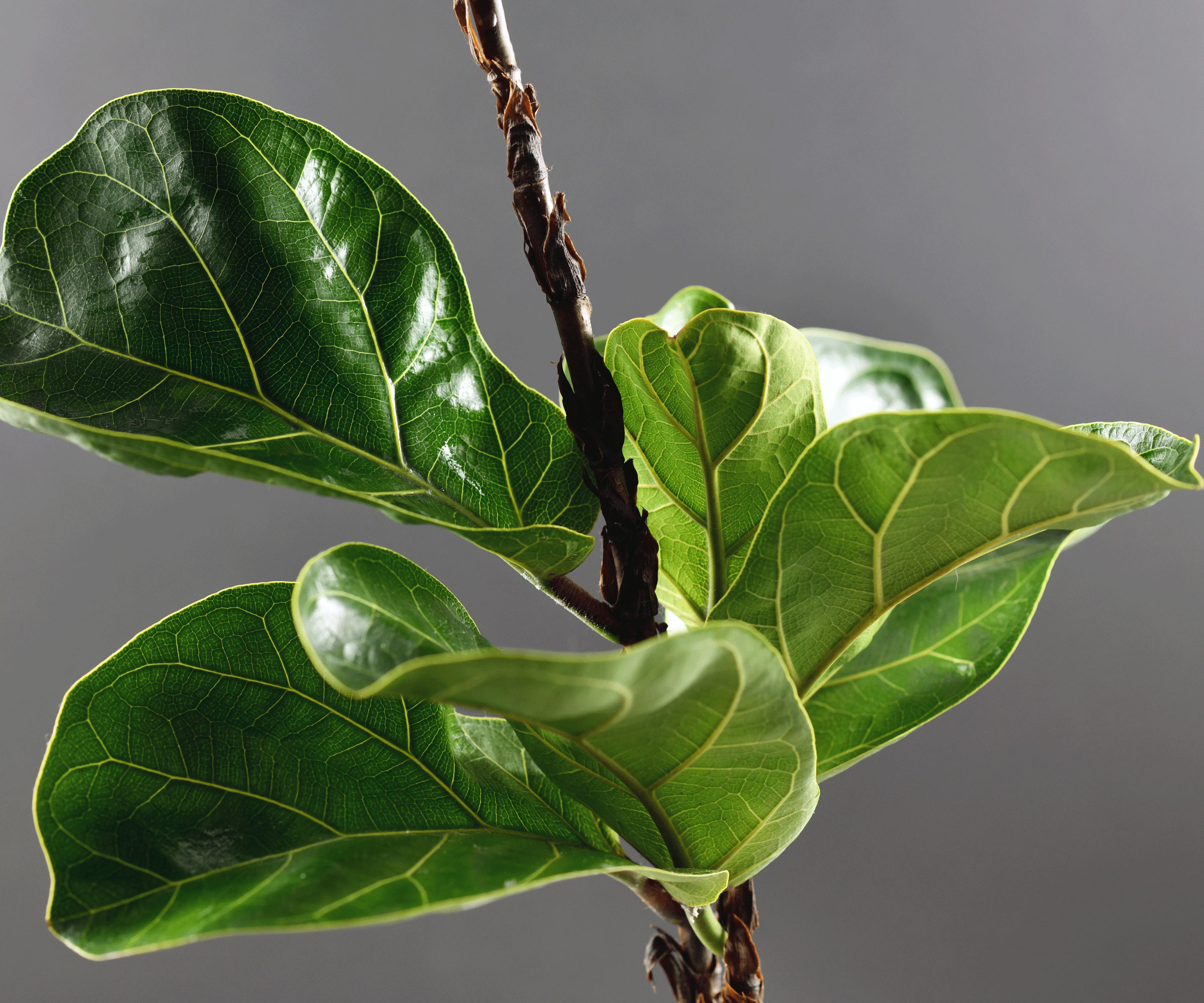
This fiddle leaf fig plant is a little lacking in the leaf department
4. The center of your plant is very dense
If your fiddle leaf fig plant is very bushy and the leaves are compact it's not good for the health of your plant. The leaves need a decent amount of space between them to allow the airflow to circulate that's necessary for healthy growth.
Leaves can also become marked if they are crammed too closely together. So it's important to thin out the growth by pruning to create an airier plant. 'If the branches are obstructing one another or limiting each other's growth, prune some of them to allow better air circulation and promote healthy growth,' says Vladan Nikolic of mrhouseplant.com.
First identify any leaves that are brushing against each other. Don't be afraid to reach right into the heart of the plant with your shears to free up some space. You may need to remove a whole stem or simply a few leaves.
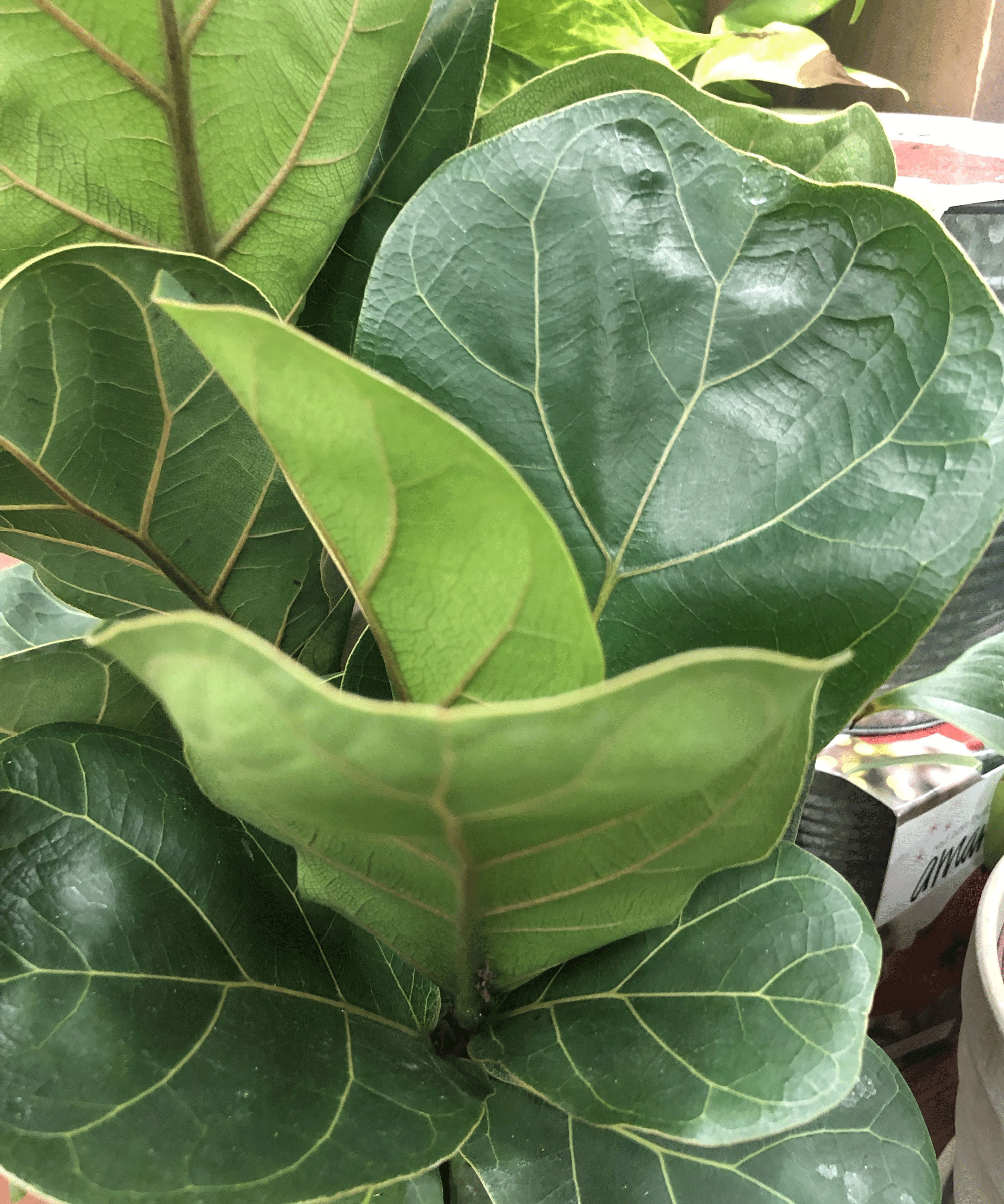
These densely packed leaves need thinning out to let air into the heart of the plant
5. Your plant has discolored leaves or a disease
As soon as you notice that your fiddle leaf fig leaves are turning brown, or if leaves start to yellow, remove them by pruning to improve the look of your plant as well as keep it healthy. Remember it will still be pumping energy into those faded leaves.
Damaged leaves often tend to be grouped towards the bottom of the stem and removing them creates a much neater outline, especially if you are aiming for your fiddle to become tree-like in shape with a long bare stem. 'Removing lower leaves can also help promote new growth as the plant releases growth hormone, promoting new growth at the top of the plant,' says Richa Kedia of Simplify Plants.
It's also a good idea to find out why your fiddle leaf fig is dropping leaves if this happens regularly.
Finally, if your fiddle leaf fig has a disease, you should remove all parts affected. 'Leaves that are brown, crunchy, or dry should be pruned, and you should cut them at the petiole, close to the stem,' says Vladan Nikolic. 'Remember to sterilize your pruning shears to prevent disease spreading.'
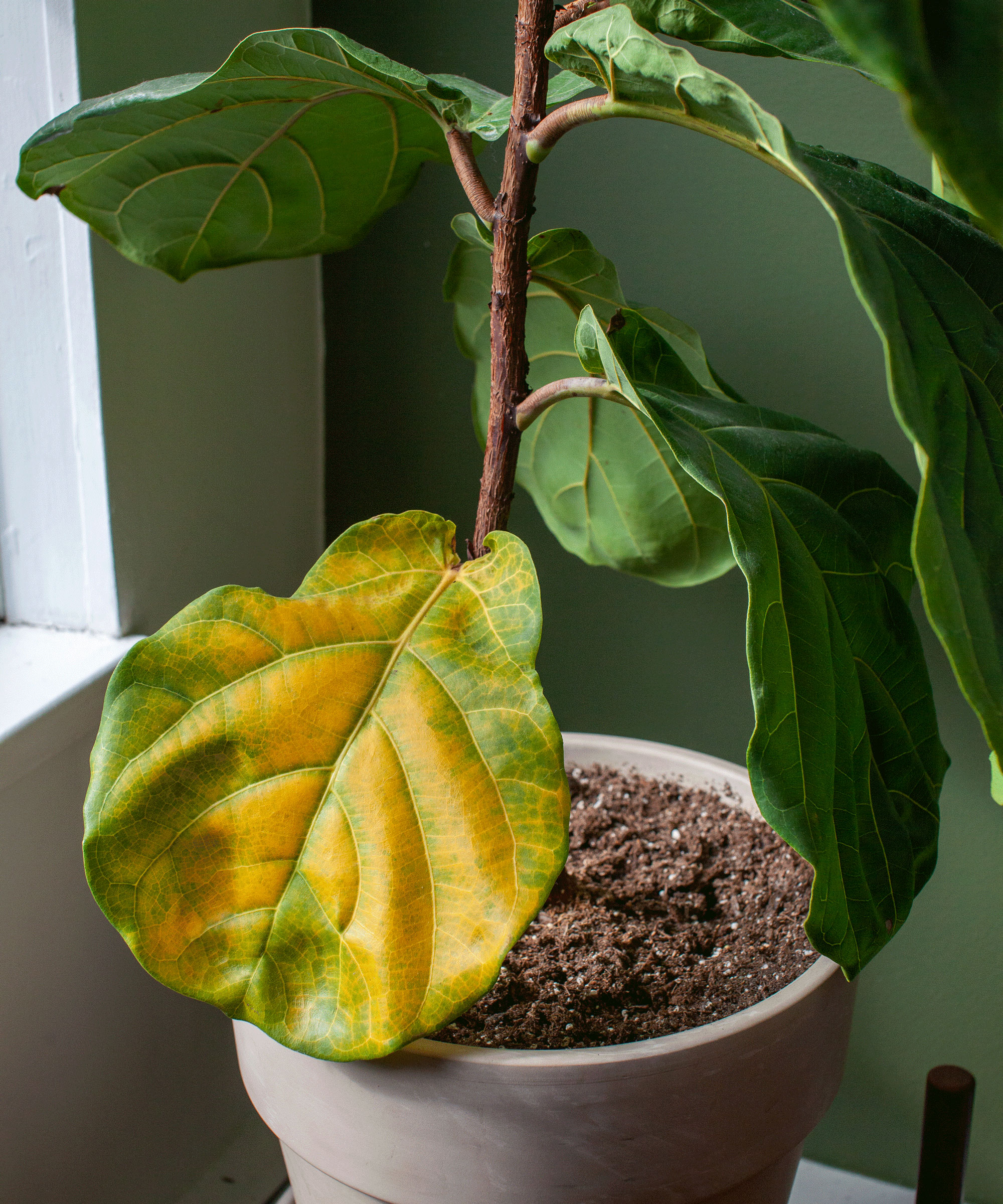
Trim off any discolored leaves regularly to keep your plant healthy
How to prune a fiddle leaf fig in 4 simple steps
Fiddle leaf fig pruning and shaping is important for maintaining its overall health and aesthetic appeal.
'You can be creative when styling your fiddle leaf fig and prune it according to your taste,' says Vladan Nikolic. 'It takes a little bit of practice to master this skill, but with time you will be able to prune your plant and shape it just the way you want.'
- Identify which parts of your fiddle leaf fig need pruning. Look for any dead or yellowing leaves, as well as any branches that are growing too long or in an awkward direction that is making your plant lopsided.
- Rotate your plant and decide where you need to make cuts to create the shape you're looking for. If the leaves are healthy and unblemished it might seem wasteful (and hurtful as a plant parent to cut your baby!) but remember you can find out how to propagate a fiddle leaf fig so that none of your cuttings are wasted and you can boost your collection with new plants.
- Be sure to use clean, sharp tools. Cut at the right point to avoid damaging your plant. You will need sterilized pruning shears or scissors and something to clean them with such as rubbing alcohol (available from Amazon) as you go along as fiddle leaf figs produce sticky sap and you don't want to contaminate either shears or cuttings.
- Prune any unhealthy or diseased leaves you’ve noticed, then remove any branches that are crowding out others. Make each cut about half an inch from any leaves or stem. Start by cutting the stem at a 45-degree angle just above a leaf node, which is the point where a leaf connects to the stem. This will encourage new growth from that point. Don't go crazy – removing one or two leaves or one stem is best so you don't stress your plant.

This is one of mine after I cut out some discolored leaves that were spoiling the look. I was careful not to damage those new leaf buds nestled into the stem. It's one of my smaller fiddle leaf figs and I prefer to use scissors for these ones
FAQs
How do I ensure I don't prune too much from my fiddle leaf fig?
It's best to go in gently when it comes to fiddle leaf fig pruning, especially if you're new to this game. I'm always nervous around these beauties as the leaves are so large it seems too drastic removing them.
Start by pruning only two or three leaves or one section of stem if your fiddle is a branching one, then waiting a week or so to let your plant regenerate. Monitor your plant's response and check all is well before going in again with the shears if you need to.
Be careful not to over-prune your fiddle leaf fig. You should only remove about 10% of the plant at any one time. Also makes sure you don't accidentally cut off any new buds or shoots that are forming on your plant as this can inhibit the future growth of your fiddle leaf fig.
Remember that pruning can be stressful for a plant, so it's important not to overdo it. Fiddle leaf figs are one of the best indoor plants as long as you follow our pruning advice to keep them looking their best. Take it slow and steady and your fiddle leaf fig will soon reward you with healthy, vibrant new growth.

Lifestyle journalist Sarah Wilson writes about garden design and landscaping trends for Homes & Gardens. She has studied introductory garden and landscape design, and also has an RHS Level 2 qualification in the Principles of Plant Growth and Development. She is a regular contributor to Homes & Gardens and Livingetc. She has also written for Country Living, Country Homes & Interiors, and Modern Gardens magazines